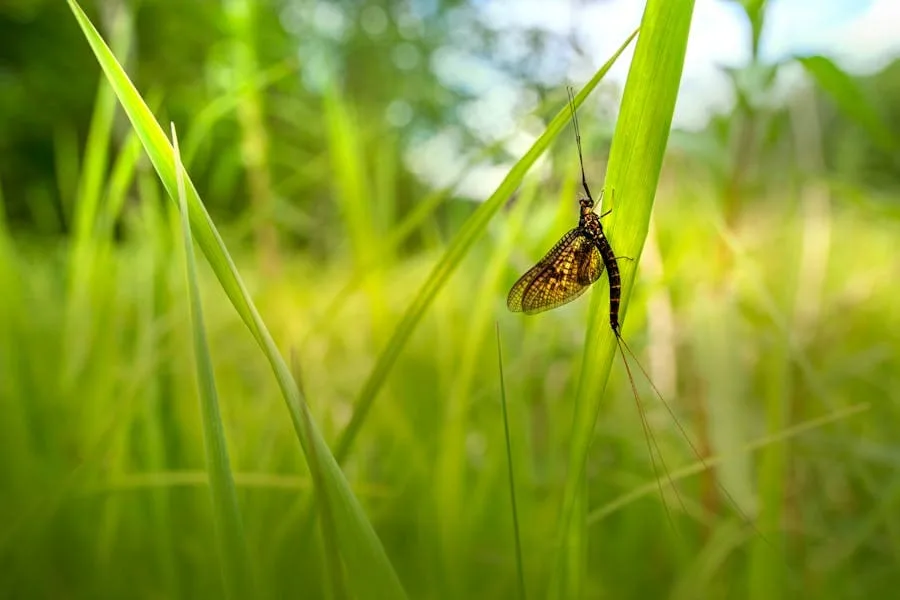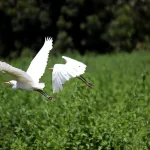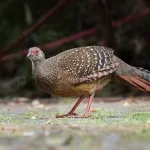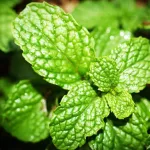The mayfly is an aquatic insect known for its remarkably short lifespan, typically living only for a few hours or days.
This fleeting existence imbues the mayfly with a rich tapestry of spiritual meanings across various cultures.
In many traditions, the mayfly emerges as a symbol of life’s impermanence, a reminder to be present in the moment and an encouragement to embrace change.
Its brief life cycle often leads to a representation of the importance of seizing opportunities without delay.
Spiritually, the mayfly can be viewed as a messenger challenging individuals to consider the lightness of being and the fluidity of time.
Its dance above water is a display of both ephemeral beauty and transformation, offering a metaphor for human experiences that unfold and expire with similar swiftness.
In cultural mythologies, such as some Native American beliefs, the mayfly symbolizes transformation and serves as a guide through cycles of change, supporting adaptation and acceptance.
The symbolism attached to the mayfly extends beyond its transient nature and touches on themes of rebirth and the promise of new beginnings.
After all, despite its brief life, the mayfly’s role within its ecosystem is significant, demonstrating how even the smallest and most ephemeral beings have purposes that contribute to the larger cycle of life.
These layers of meaning combined make the mayfly a powerful spiritual emblem, providing a multifaceted lens through which to view the intricacies of existence.
Spiritual Meaning of Mayfly
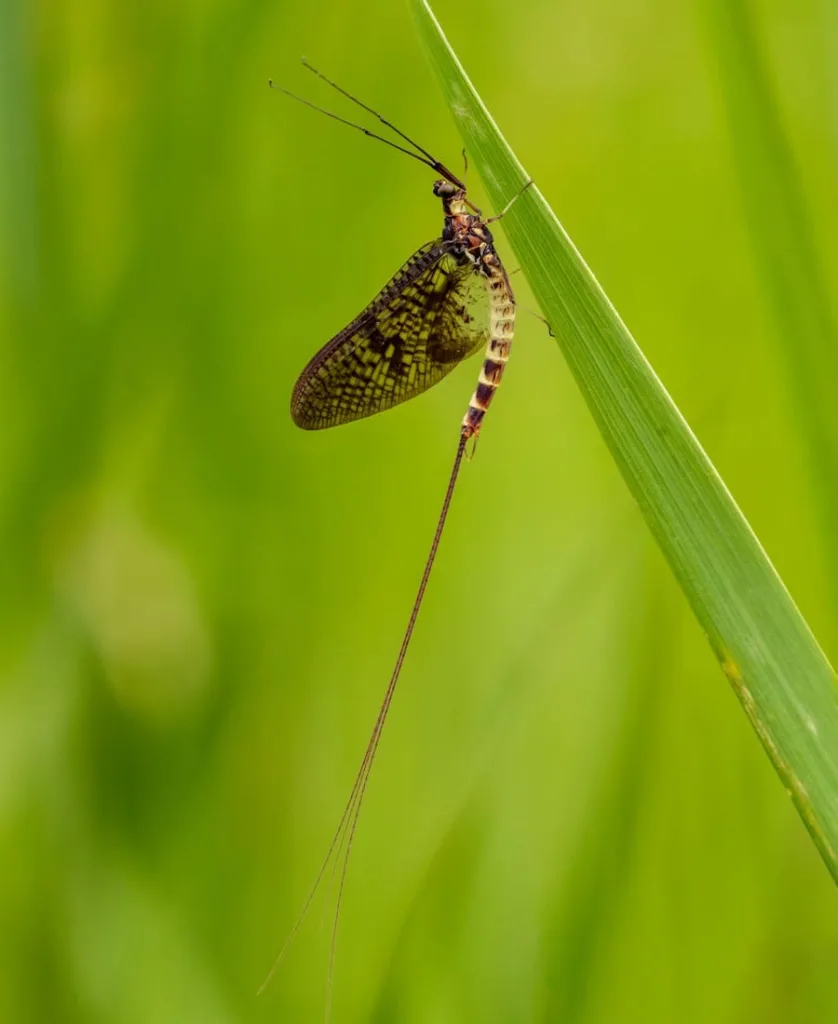
The mayfly’s ephemeral lifespan, often lasting just a single day, imbues it with significant spiritual symbolism.
They are commonly associated with the brevity of life and the importance of living in the moment.
In many spiritual traditions, mayflies are seen as reminders to enjoy life’s fleeting pleasures and to fully embrace the present.
Transformation is another spiritual theme tied to the mayfly. Given its rapid life cycle — from aquatic nymph to airborne adult — it exemplifies change and the natural progression of life stages.
This aspect often serves as a metaphor for personal growth and transformation.
In certain cultural beliefs, mayflies carry messages of self-reflection, urging individuals to consider their life’s purpose and to make meaningful choices.
The mayfly’s dance above water is also seen as a symbol of the flow of time and the inevitable changes that come with it.
Furthermore, mayflies have ties to water elements, which traditionally symbolize emotions, intuition, and the subconscious.
Observing mayflies can inspire one to connect with their inner world and to flow with life’s currents rather than resist them.
For those who regard the mayfly as a totem or spirit guide, there could be messages related to self-confidence and seizing opportunities.
The sight of mayflies is sometimes taken as a positive omen, marking moments of good luck, abundance, and wealth.
Table: Key Spiritual Symbols of Mayfly
| Symbol | Meaning |
|---|---|
| Brevity of Life | Mindfulness and appreciation for the moment |
| Transformation | Personal growth and life changes |
| Self-Reflection | Inner contemplation and purpose |
| Flow of Time | Acceptance of life’s transience |
| Water Connection | Emotion, intuition, and the subconscious |
| Spirit Guide | Confidence and seizing the day |
By recognizing these spiritual meanings, individuals might find a deeper connection with the natural world and introspection on their life’s journey.
Read too: Black Beetle Spiritual Meaning (6 Wonderful Meanings)
Mayfly Symbolism in Different Cultures
Mayflies have been perceived symbolically across various cultures, each attributing different meanings and significances to this ephemeral insect.
Native American Interpretations
In Native American cultures, mayflies are often seen as symbols of renewal and transformation.
They embody the notion that life is short but also full of potential for change. Certain tribes regard mayflies as rain bringers, essential for the growth and sustenance of life.
Celtic Mythology
Celtic Mythology doesn’t explicitly mention mayflies, but insects and small creatures are typically regarded with a sense of wonder and are often seen to hold connections with the natural world and its cycles.
Though not directly referenced, the brevity of a mayfly’s life might symbolize life’s fleeting nature in Celtic perspectives.
Japanese Cultural Significance
In Japanese culture, the mayfly’s brief lifespan is a reminder of mujō, the Buddhist concept of impermanence.
It represents the transient nature of life and the beauty found within it.
This symbolism is often expressed in traditional Japanese art and literature, emphasizing an appreciation for each moment.
Christian Symbolism
In Christianity, mayflies aren’t specifically referenced in religious texts.
However, their short life cycle could be interpreted as a metaphor for the transient nature of earthly life and the importance of seeking spiritual longevity.
The mayfly’s life serves as a reminder that material existence is fleeting compared to the eternal spiritual life.
The Lifecycle and Transformation of Mayflies
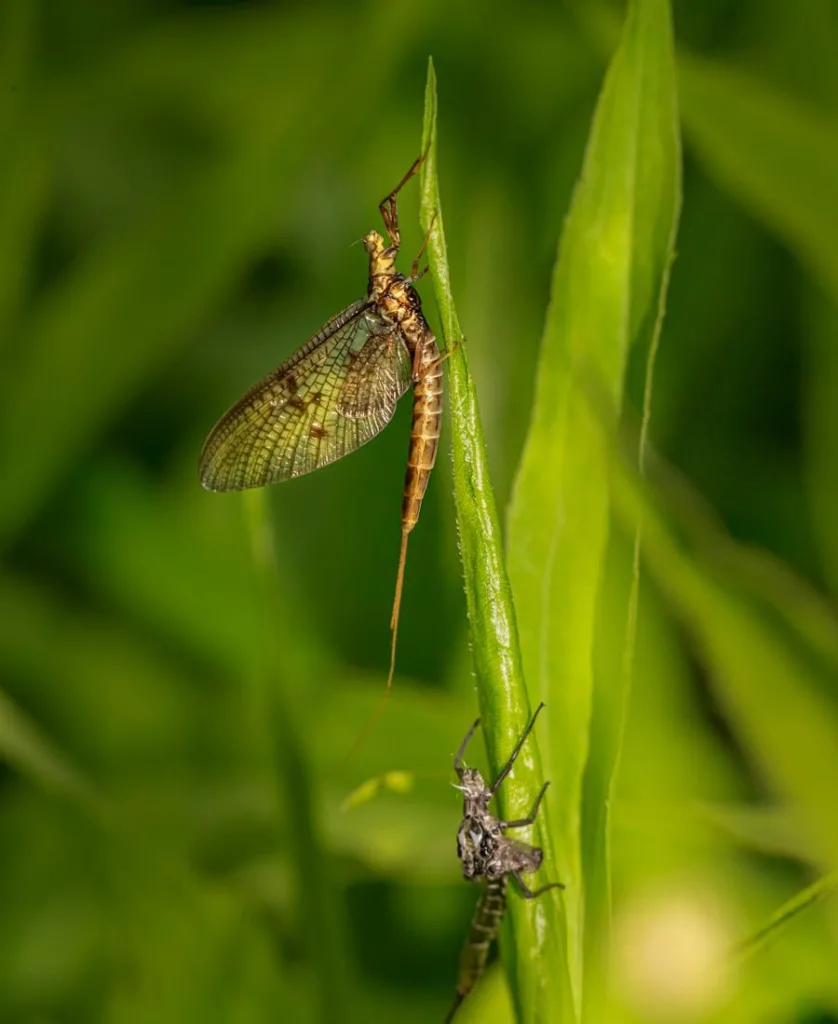
The mayfly’s existence is a profound representation of transformation and the ephemerality of life.
They undergo a unique lifecycle with several developmental stages, each signifying growth and change.
Stages of Development
Egg: The life of a mayfly begins as an egg laid in water. These eggs develop over a period that can last from a few days to several months, depending on the species.
Nymph: Upon hatching, mayflies enter the nymph stage. They spend this period of their lifecycle in the aquatic environment, contributing to the ecosystem as they feed and grow.
Nymphs go through a sequence of molts, shedding their exoskeleton multiple times as they develop.
Metamorphosis and Growth
Subimago (Dun): The transition from nymph to adult mayfly involves an intermediary stage called the subimago.
During this phase, which may last just a few minutes or up to a few days, the mayflies experience their first metamorphosis, developing wings and the ability to leave the water.
Imago (Adult): The final transformation into the adult stage sees the mayfly become a fully formed imago.
Adults are characterized by their short life, generally surviving only for 24 to 72 hours.
They do not eat during this stage; their primary purpose is reproduction. Adults exhibit a final molt from the subimago stage to become sexually mature, concluding their lifecycle.
In their ephemeral existence, mayflies embody the perpetual cycle of life, reminding observers of both the transience and the beauty of natural processes.
If you are enjoying reading this, you will definitely enjoy reading Choking In Sleep: Spiritual Meaning: 9 Messages For Your Life
Philosophical and Spiritual Meanings
Exploring the mayfly’s existence offers a rich tapestry of philosophical and spiritual meanings.
These aquatic insects, known for their remarkably short lifespans, manifest concepts of impermanence, the importance of being present, and the avenues for personal growth.
Impermanence and Presence
Impermanence: The mayfly’s brief life is a powerful reminder of life’s transitory nature.
In reflective philosophical discussions, the mayfly often symbolizes the concept of impermanence, echoing the understanding that nothing is permanent and everything is subject to change.
- Living in the Moment: This fleeting existence encourages embracing the present. It speaks to the wisdom of living fully in the moment, understanding that each instant is temporary and thus invaluable.
Opportunity for Personal Growth
Personal Growth: Encountering a mayfly can be seen as an invitation to seize new opportunities for personal growth and transformation.
It can serve as a spiritual symbol to initiate change and foster development on one’s inward journey, emphasizing the need to:
- Reflect on one’s current state
- Embrace opportunities to learn and evolve
Reflection on Mortality
Mortality: In the context of mortality, mayflies prompt a deep reflection on life’s stages and the certitude of death.
They offer a philosophical teaching moment to contemplate life’s beauty and its ephemeral quality, potentially leading to a greater appreciation of our own mortality.
- Fleeting Nature: The mayfly’s life, sometimes lasting just a single day, exemplifies the fleeting nature of existence, thereby fostering a sense of urgency to live authentically and meaningfully.
These subsections encapsulate the mayfly’s role as more than an insect; it is a philosophical compass pointing toward wisdom, presence, and growth.
Before you leave, read 9 Spiritual Meanings Of Hawk Feather (Angelical Messages)
Final Words
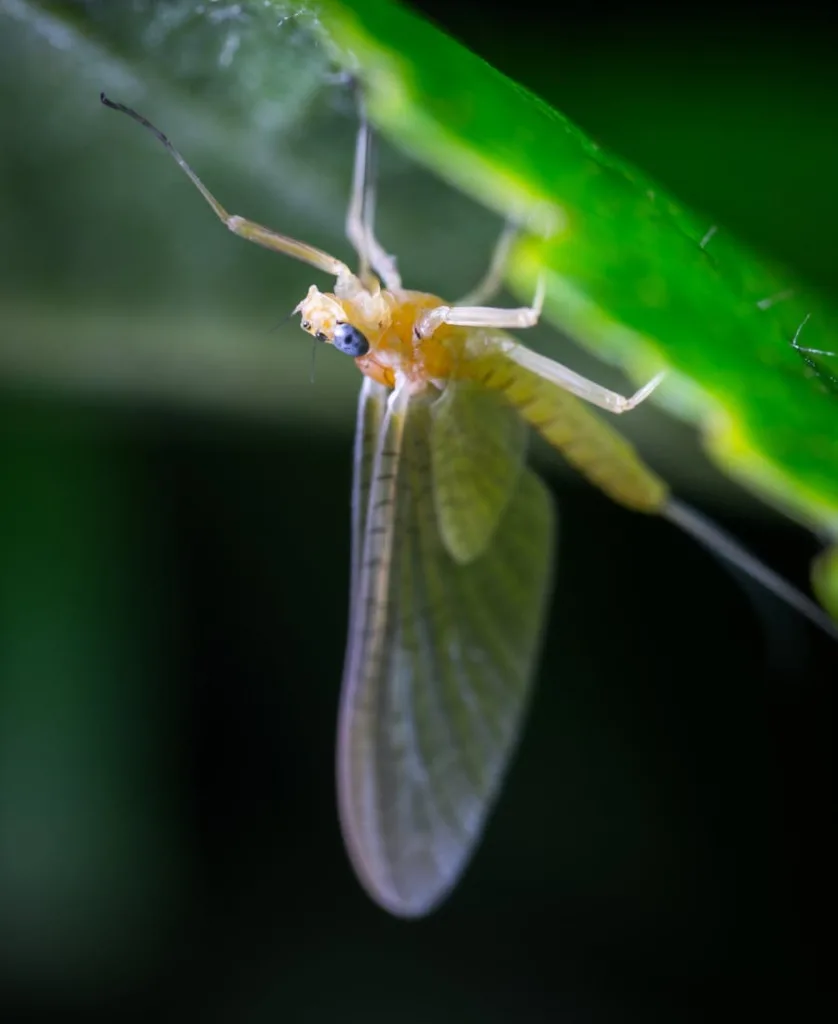
The mayfly’s ephemeral existence harbors deep spiritual symbolism across various cultures.
They represent new beginnings and the continuous cycle of life.
Recognizing its appearance as a symbol of hope, individuals are reminded that life’s challenges are transient, and that perseverance will lead to brighter days.
In spiritual contexts, one encounters the mayfly as an emblem of life’s fleeting nature.
Its brief lifespan encourages one to live in the moment and appreciate the beauty surrounding them.
From a more disciplined angle, the mayfly embodies diligence and the power of discipline.
Its presence can be interpreted as divine encouragement to embrace hard work and purposeful living.
Each culture attaches its unique interpretation to the mayfly, from Celtic to Buddhist and Taoist beliefs, but they converge on the themes of personal growth and spiritual transformation.
In summary, the mayfly’s spiritual significance as a totem serves as an important reminder:
- Impermanence: Life’s transitory state requires one to cherish each moment.
- Transformation: Continuous personal and spiritual growth is essential.
- Detachment: Letting go of material desires to attain inner peace.
- Discipline: Cultivating diligence to navigate life’s journey effectively.
When one reflects on the mayfly, they are encouraged to ponder their relationship with time, life, and the cosmos.

